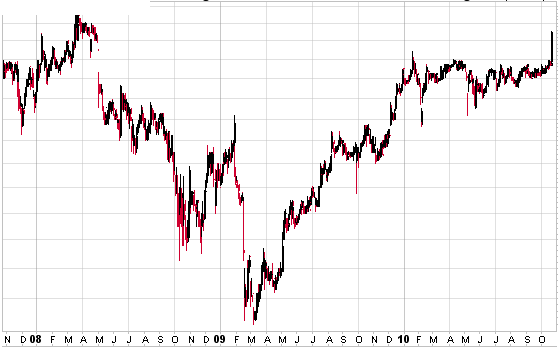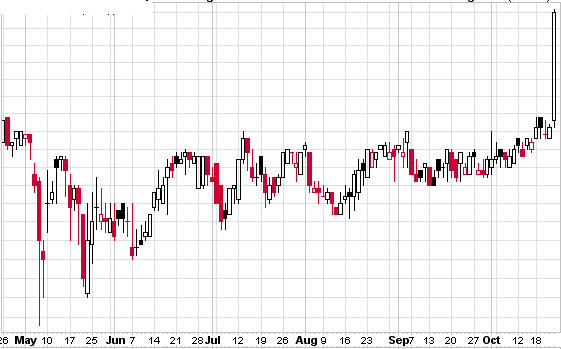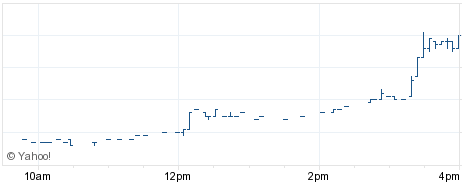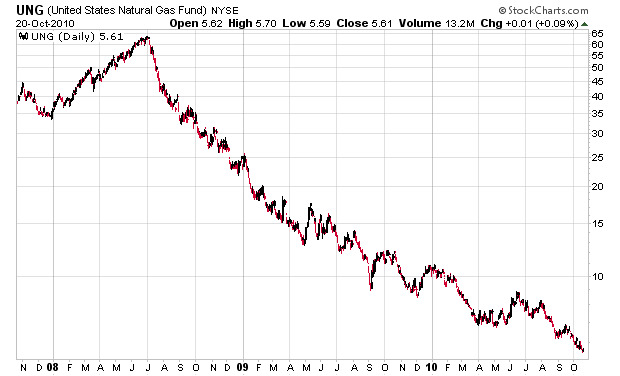I notice Susan Brunner has a good summary of some talks she attended at the Toronto Moneyshow. If she ever comes to Vancouver (or even if she is reading this), I will extend an invitation for coffee.
I know the Moneyshow (formerly Financial Forum) comes to Vancouver annually in February and I always make it a point to attend simply because if there are any dominant themes, I usually then yellow-flag them as a sign that the investment thesis has reached public saturation.
Just judging from Susan’s remarks, one can take the following as consensus:
– Negative on the US; all mentioned some form of a medium to long-term bear market with little equity returns;
– Government bonds over-valued (yields too low);
– Yield-bearing securities, including Canadian Banks, and various sorts of income trusts that will be converting to corporations, and in general anything with sustainable yields with a prevailing view of deflation;
– Some projected inflation. There seems to be a division of people in both camps;
– We are in the middle of a natural resource bull market for roughly the next decade;
– Most growth opportunities will be offshore in developing countries;
So these expectations are probably priced into the marketplace. It is a matter of determining whether things will actually occur as market participants are pricing, or whether the scenario will deviate.
Indeed, if the world believes that commodities are going up, there is a chance that demand could be even higher than expected. It is the equivalent of making a small-odds bet on a probable event – you will still be rewarded for getting it right, just not as well rewarded for betting on something very obscure and mis-priced that turns your way.





